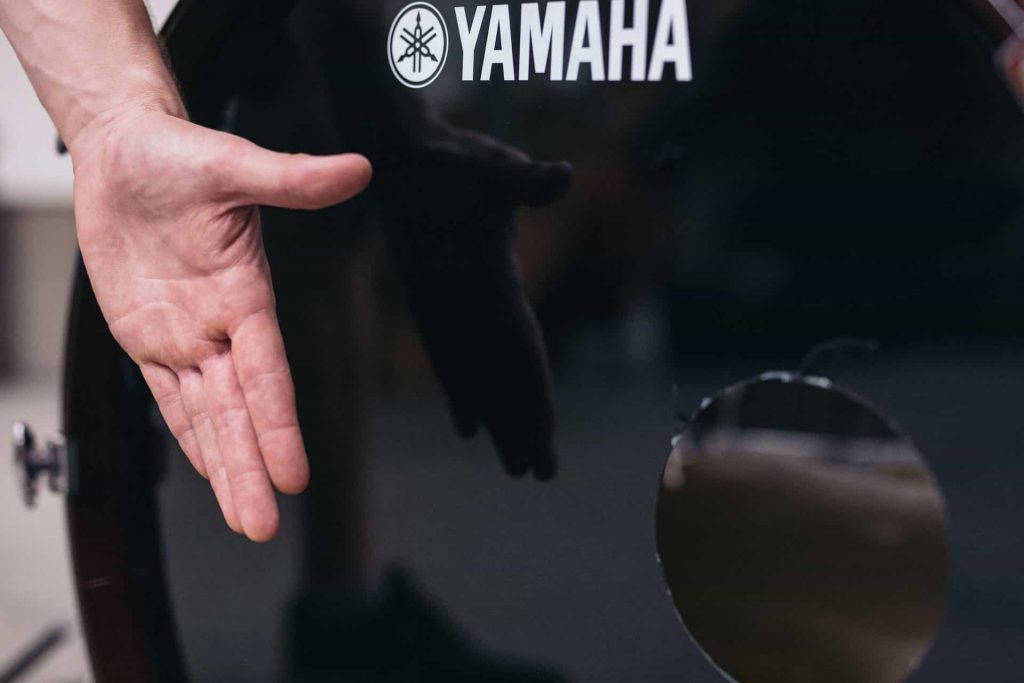BEHIND THE MIC: THE AEA TRP RIBBON MICROPHONE PREAMPS


Ribbon microphones are the most natural mics that you can use to capture the sound of an instrument, a voice, and even the ambience of a room. Due to their figure-of-8 polar pattern, massive low-end pick-up, and natural high-frequency roll-off, ribbons really hear more like your ears than any other mic out there.
If you’re a musician and have struggled to capture the natural sound of your instrument, it’s time to try a ribbon mic. Maybe you’ve gone to recording studios, friend’s houses, and you’ve even bought some mics, but you’ve struggled to truly record your instrument the way you hear it. A ribbon mic will fix that. Ribbons are the warmest, most natural sounding mics in the world.

From the mid-1930s until the mid-70s, most recordings and broadcasts were made using ribbon microphones. The basic design of ribbon mics has always been simple. Each consist of a thin strip of corrugated aluminum suspended loosely between two magnets connected to a transformer.
During the 1970s, however, with the rise in quality of condenser microphones, ribbons fell out of favor. This was mainly because recording methods changed and the era of magnetic tape was upon us. Condensers sounded brighter than ribbons on tape because of their high resonant frequency. This helped when compensating for the high-frequency roll-off of older mixing consoles, tape machines, vinyl records, and radio. In this period, RCA closed its ribbon mic manufacturing, causing ribbon market to collapse.
In the 1990s, with the advent of digital recording, ribbons made a comeback due to digital recording’s transparent sound. Now it was condensers that suffered because they often brought out harsh sounds in cymbals, brass and string instruments. Ribbons are known for taming these sources and working extremely well with digital recordings. Many great engineers — who never forgot ribbons — returned to the more natural ribbon sound in the digital era.
AEA started repairing, restoring, and manufacturing spare parts for RCA ribbon mics in 1976. By 1998, we had created 100% of the spare parts needed to make an RCA 44 from scratch. With our 20 years of experience working with the RCA44s and the newfound demand for new ribbon mics, we decided to release an updated reproduction of this classic design called the R44C.

We tune all of our ribbons to 16.5 Hz, the same frequency that RCA used on their 44BX mics. In fact, most AEA microphones share the same ribbon used in the RCA 44 series. This is important because it is the reason all AEA mics sound like they are from the same family, even though each mic has a distinct personality.
Of course, the way the ribbon element is tensioned and tuned, its size and thickness, the type of corrugation and the materials in front and behind the ribbon all have a huge impact on the sound and tonality of the microphone. RCA got such a strong reputation for its ribbon design that its 44BX ribbon from the late 1930s has long been considered the most musical microphone ever built.
From the beginning, ribbon mics inherently had figure-of-8 pickup patterns, meaning they received sound from both the front and back sides. This pick up from the back is a factor in what makes ribbon mics sound so natural and appealing. Ribbons have very strong nulls and do not pick up any sound at all on the sides. This can be used to great advantage when recording multiple instruments in the same room.
Ribbons with a figure-of-eight pattern have the most proximity effect of any other type of microphone. The bass gets more pronounced the closer the mic comes to the source. Radio announcers love ribbons because it makes them sound like “the voice of God.”
This proximity effect can also beef up thin sounding musical instruments and make them sound warmer. It gives kick drums a deepened booming effect. Thin vocals are boosted and made to sound richer and deeper.
Ribbon mics have a high-frequency roll-off that is similar to how human ears hear sounds. Our ribbons are tuned lower than human hearing so that they capture the low end past the sub frequencies. Almost no other microphone out there captures as much low-end as our models.
Today’s AEA ribbon mics are more robust and convenient to use than ever before. The original RCA 44BX weighed eight pounds. We make a replica of it called the AEA R44C, which weighs the same. But we realized that an eight-pound mic is not for everyone outside of the studio. It is not the most convenient size and weight for extreme portability in today’s increasingly mobile world. So our line has expanded to become lighter and more flexible through the years.
We now make near-field and far-field microphones in both active and passive versions. Near-field mics, like our active, one-pound N22, the supercardioid KU5A, and adjustable R92, can work at just an inch away from the sound source and maintain an excellent balance of highs and lows.
Far-field mics, like the active N8 and passive R88, are designed to work at greater distances for the pick up of room sounds and to give instruments, like drum kits, more ambience.

Passive ribbons are preamp sensitive, meaning they need high gain and high-input impedance preamps like AEA’s RPQ2, RPQ500 and TRP2 models for optimal performance.
Our active ribbon microphones have 12db more output than our passive models, are suitable for long cable runs and can be used with audio interfaces typically found in home or project studios. These preamp-agnostic, road-ready active ribbons work anywhere with any preamp, giving ribbon users a new sense of freedom. They are perfect for traveling bands who don’t know what preamp or console they may encounter from night to night.
One of the great misconceptions about ribbons is that they are fragile and delicate to use. The fact is a well made, modern AEA ribbon should be treated exactly like any high-quality condenser microphone. This means you should treat it well and it will last for years. Avoid dropping the mic, keep it covered when not in use and protect it from direct blasts of air. Other than that, our ribbons require no special treatment.
Virtually anything being recorded in a studio will not be loud enough to hurt a ribbon. In fact, AEA ribbons have a higher SPL than most condenser microphones.
However, ribbons users should know that a major gust of air — or wind — blowing directly on a ribbon can break it. This very rare, but if it happens, the mic will need to be repaired. There is, however, a simple way to prevent this from happening. A simple “hand test” is a good way to protect a ribbon. Use the ribbon mic in front of blaring loud guitar amps, to capture drum overheads and even in front of kick drums — as long as no air is directly hitting the ribbon. A good way to determine if there is air blowing is to put your hand in front of the source before placing the mic in position. If you feel air currents, pull your hand back until you don’t feel it. Then place the mic in that position. It’s as simple as that.
A simple “hand test” is a good way to protect a ribbon. Use the ribbon mic in front of blaring loud guitar amps, to capture drum overheads and even in front of kick drums — as long as no air is directly hitting the ribbon. A good way to determine if there is air blowing is to put your hand in front of the source before placing the mic in position. If you feel air currents, pull your hand back until you don’t feel it. Then place the mic in that position. It’s as simple as that.
Ribbons are the oldest type of microphone in the world and they are known as the first great microphones for music and voice. Musicians in every genre and of every instrument still turn to ribbons to capture the true tone of their instrument. There is no risk if you follow the basic rules.